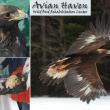Golden eagle’s three-month journey from near death to freedom a first in Maine’s history
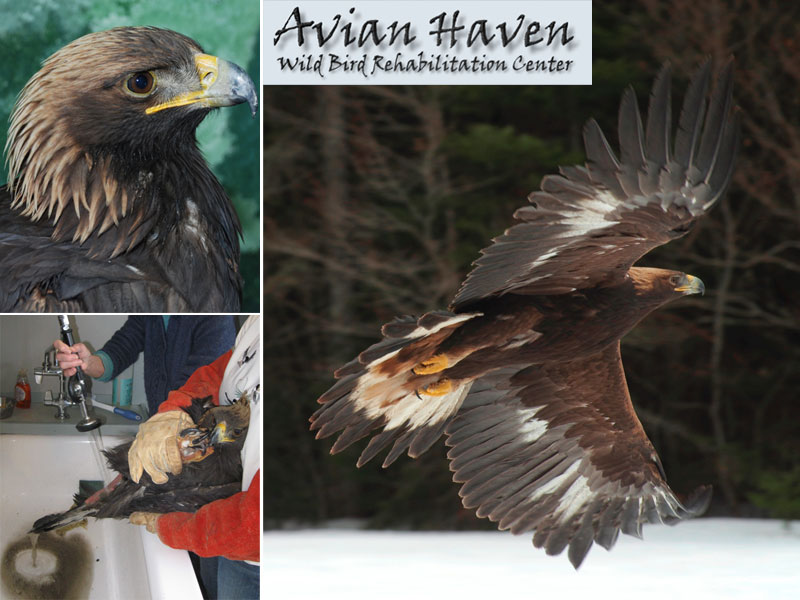
 The golden eagle as it was originally found by Kerrin Erhard and her son, Blake, while they were cross-country skiing on Ovens Mouth Preserve on Dec. 29, 2013.
The golden eagle as it was originally found by Kerrin Erhard and her son, Blake, while they were cross-country skiing on Ovens Mouth Preserve on Dec. 29, 2013.
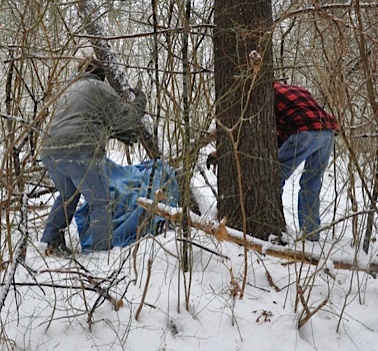 Boothbay area Animal Control Officer Betsy Pratt and her husband, David, responded to Avian Haven's call to rescue the sick bird, which they caught easily by throwing a towel over it.
Boothbay area Animal Control Officer Betsy Pratt and her husband, David, responded to Avian Haven's call to rescue the sick bird, which they caught easily by throwing a towel over it.
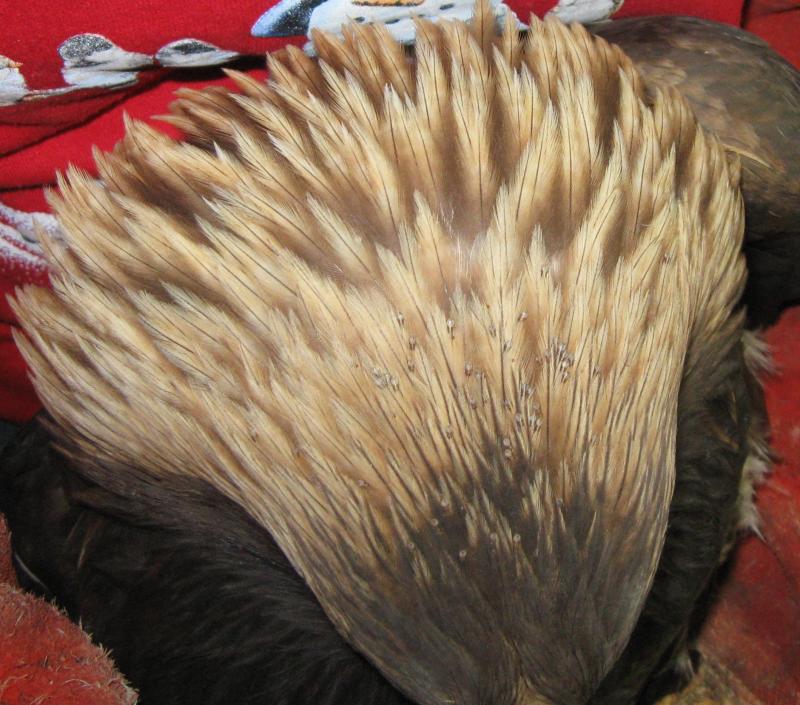





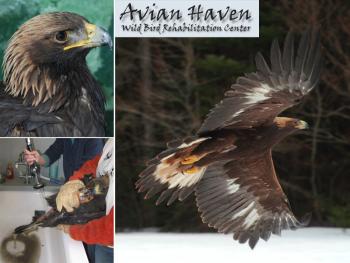
 The golden eagle as it was originally found by Kerrin Erhard and her son, Blake, while they were cross-country skiing on Ovens Mouth Preserve on Dec. 29, 2013.
The golden eagle as it was originally found by Kerrin Erhard and her son, Blake, while they were cross-country skiing on Ovens Mouth Preserve on Dec. 29, 2013.
 Boothbay area Animal Control Officer Betsy Pratt and her husband, David, responded to Avian Haven's call to rescue the sick bird, which they caught easily by throwing a towel over it.
Boothbay area Animal Control Officer Betsy Pratt and her husband, David, responded to Avian Haven's call to rescue the sick bird, which they caught easily by throwing a towel over it.






FREEDOM — For many who care deeply about wildlife, the recent headlines have been depressing: the ivory hunter's senseless killing of African elephants; poaching of India's remaining Bengal tigers; and the plight of polar bears due to climate change-induced shrinking ice caps.
Early April 2014 though delivered an inspirational wildlife story that showcased the best of human compassion for our fellow creatures. That's when a fully-grown 9-month-old golden eagle was released to the wild after convalescing for several months at Avian Haven, Maine's premiere wildlife rehabilitation facility located in the town of Freedom. Golden eagles are an endangered species in Maine, and rare throughout eastern North America.
The eagle's unlikely road to recovery began Dec. 29, 2013, when Kerrin Erhard and her son, Blake, found the sick bird while cross-country skiing on Ovens Mouth Preserve in Boothbay. Unable to fly, the eagle tried to escape the approaching Erhards by spreading its wings and walking unsteadily. Kerrin phoned her husband, Lincoln, who in turn called Avian Haven. Boothbay area Animal Control Officer Betsy Pratt and her husband, David, responded to Avian Haven's call. The Pratts easily captured the eagle by tossing a blanket over it.
When the eagle arrived several hours later at Avian Haven, Marc Payne and Diane Winn, wildlife rehabilitators and managers of the facility, were stunned to see a rare immature golden eagle. They had expected to begin emergency care for an immature bald eagle. Since first opening in 1999, Avian Haven has nursed nearly 12,000 injured birds representing more than 100 species.
"This is the first golden eagle we've ever handled," said Winn.
Maine is home to about 600 pairs of bald eagles, but there are no known nesting golden eagles in the state. According to state eagle biologist Charlie Todd, golden eagles last nested in Maine in 1997.
Near death, the emaciated golden eagle weighed a mere 7 pounds, about half of what a healthy eagle weighs. Too weak to fly, the eagle was caked with mud from being grounded. Payne and Winn worked quickly, taking X-rays, drawing blood and spraying agents to rid the eagle of numerous feather lice. Also too weak to eat on her own, a feeding tube was inserted in the eagle's throat to deliver a liquid meal. The lethargic bird settled in to a hospital "room" that would become her home for the next three months.
Lab results produced a mixed bag of news. X-rays looked normal, but the blood parameters indicated a state of severe debilitation and anemia. Her elevated blood lead levels were a major health risk. Payne and Winn opted to postpone chelation therapy, a treatment used to remove lead, mercury and other heavy metals from blood, until the eagle was more stable.
"We were not confident that she would live the night. But she did, and droppings on the floor the next morning gave us good news that her GI tract was working," said Winn.
Tube feeding continued for several days. "She had a heavy parasite load, which we treated, and there was some blood in her droppings," she continued.
Ophthalmologist Steve Witkin conducted an eye exam on Dec. 31, 2013, and pronounced the eyes undamaged.
On Jan. 1, 2014, additional blood work indicated worsening anemia, exacerbated by lead poisoning. She most likely ingested lead bullet fragments while scavenging a deer or moose carcass.
"We were concerned about a possible secondary rodenticide exposure, in addition to lead, so we administered a treatment for internal hemorrhage," said Payne.
An attempted transition to solid foods proved problematic. Payne and Winn experimented by giving her "pinkie" mice, a standard diet for rehabbing captive raptors. The eagle tentatively ate the mice and then promptly vomited. As her weight continued to drop dangerously low, they resumed tube feeding the bird a high-calorie liquid slurry diet.
A minor miracle happened on Jan. 4. The eagle's eyes lit up and she acted very excited when presented with a meal of muskrat, which she devoured. Her weight and strength improved daily with each muskrat meal.
"Her fondness for muskrat never waned," said Winn.
Bolstered by a steady diet of muskrats, Jan. 7 proved to be a "turn around" day health wise for the eagle. Her weight was up from a low of 6.3 lbs. to 8.8 lbs., and blood work revealed a significant improvement in healthy red blood cells. She was no longer anemic. With her condition dramatically improving, the eagle was given a much-needed bath to wash mud and dead lice from her feathers.
On Jan. 14, a follow-up parasite check also showed positive results. As a precaution, Padne and Winn administered a second treatment to rid her of internal parasites. "Her voracious appetite soon returned," Winn said, "And we were happy to see continuing weight gain. Starting on the 16th, we put her outdoors during the day, but brought her in at night to help conserve her energy through periods of colder temperatures."
Jan. 22 was another milestone day. Her weight was now at 10.5 lbs., up 33 percent in three weeks. Her strength returned too. The following day she flew up to a medium height perch inside a specially designed eagle flight cage.
Her blood work continued to improve and on Jan. 27, the blood lead levels were close to zero. Moved from her hospital room to an indoor exercise flight cage, she was now able to fly to high perches, but did so only by first flying to perches of intermediate heights. By Feb. 16, she was able to fly directly from the ground to a 40-foot-high perch.
Avian Haven's records on March 27: "She sometimes seems restless, walking the high perches almost as if pacing. Her current weight is 5.8 kg, nearly 13 pounds. We think she is ready for release."
Since golden eagles are a state endangered species, Todd, endangered species biologist with the Maine Department of Inland Fisheries and Wildlife, assumed responsibility for executing the eagle's release.
In selecting a release site, Todd considered an international Eastern Golden Eagle Working Group report on potential threats such as lead poisoning (from ingestion of spent ammunition from hunter-shot game) and collisions with wind turbine blades. Given the bird's endangered status, its recovering health and the privacy of property owners, it was decided that the release would be a low-key event with no advance publicity and limited attendance. An undisclosed area in Western Maine's mountains was selected as the April release site because golden eagles are known to pass through there during spring migration. It's hoped that the released eagle followed the lead of another golden eagle flying north to its nesting grounds in northern Quebec or Labrador.
According to Todd, during the past 40 years only six injured golden eagles have been collected in Maine, and none lived to be released. Avian Haven's rehabilitated bird would be Maine's first successful golden eagle release.
Snowstorms and cold in late March foiled several release plans. Todd needed a window of 2-3 days of good weather. Each time a release date looked promising, the window closed quickly. The long-term forecast called for decent weather during the first week of April.
Avian Haven's journal dated April 2: "Out She Goes. She flies well out of the dog kennel, but is staying low to the ground. It is soon apparent that she is going to land. Accustomed to the hard-packed snow in the flyway, she seems surprised when the soft snow barely supports her weight as she lands. She gets to her feet quickly and shakes off."
The eagle spent several minutes on the ground, orienting by looking in all directions. And then raising her powerful wings high, she got enough lift on the down-stroke to pull her feet out of the soft snow. For the first time in over three months, the eagle was flying freely in the wild.
The full flight photo is one of the last images of the eagle before she disappeared over a ridge line. Although a feeding station had been provided for her, she did not stay in the release area, and was not seen again.
A final Avian Haven journal entry: "Of course, a hope had been that she would remain in what was once a homeland for her species. But perhaps once those great wings caught the wind, her instincts could not help but take her north toward Quebec. We imagine her already there."
Post Script:
Many concerned private citizens played critical roles in the rescue and release of the golden eagle. Avian Haven is a nonprofit organization that receives no state or federal funding. It gratefully acknowledges the support provided during the young eagle's three-month recuperation period. Both cash and in-kind donations from a variety of sources helped cover the expenses associated with the bird's recovery and eventual release to the wild. On behalf of the eagle, Avian Haven thanks its many supporters who made this wildlife success story possible. If you care to make a donation, the website address is: http://www.avianhaven.org.
Ron Joseph is a retired Maine wildlife biologist. He lives in Camden.
Event Date
Address
United States










